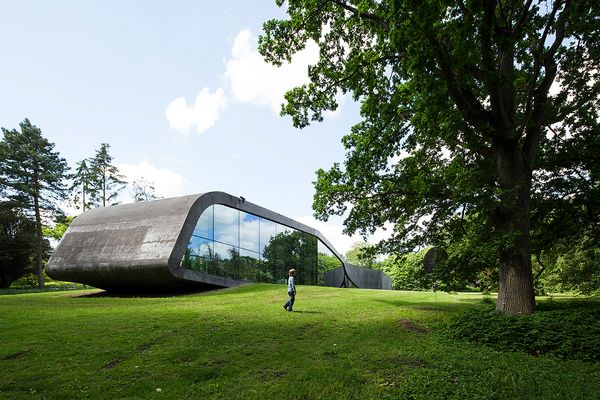Zaha Hadid's Wing, Ordrupgaard. Photo: Anders Sune Berg. Courtesy Ordrupgaard.
Kirsten MacDonald is Regional Director, Scandinavia at Phillips.
Gertrud Oelsner is the Director of the Ordrupgaard.
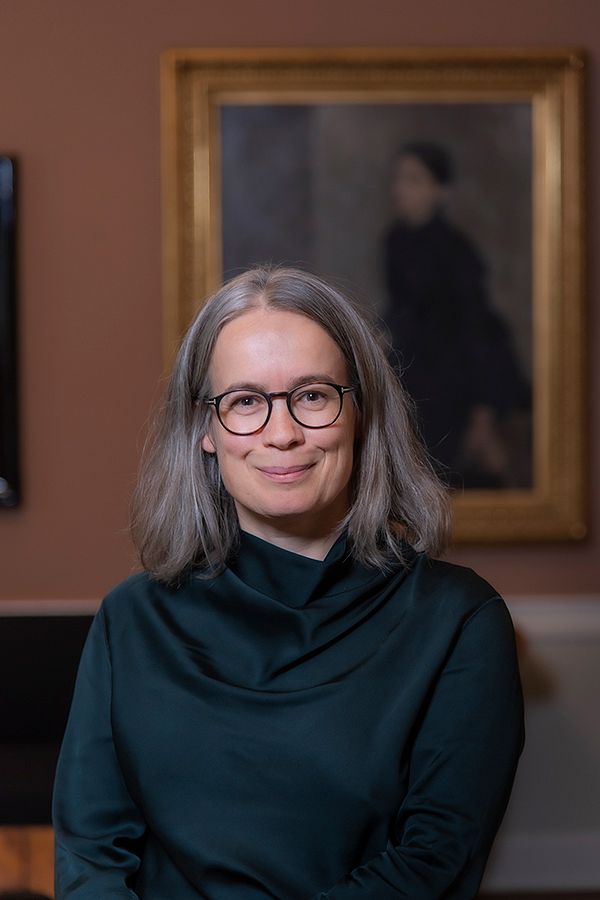
Gertrud Oelsner. Photo: Jacob Ljørring.
KIRSTEN MACDONALD: Gertrud, could you tell us about your professional journey, areas of expertise, and the experiences that led you to become director of Ordrupgaard?
GERTRUD OELSNER: Since January 2024, I have been the director of Ordrupgaard, which probably has the world’s best collection of Vilhelm Hammershøi, a unique collection of French art, a fantastic history, and an art park with excellent contemporary art. It is such a wonderful combination!
I have a master’s degree in art history, and my thesis was on Vilhelm Hammershøi, L.A. Ring, and photography. Ever since completing this degree, I have been professionally interested in Hammershøi. From 2013 to 2016, I wrote a PhD thesis on Danish landscape art in the 19th century. In 2016, I was appointed director of The Hirschsprung Collection, where I could really develop my interest in 19th-century Danish visual art, and it was a very happy reunion with the work of Vilhelm Hammershøi, who is well represented in the collections there. In 2018, together with my colleague Annette Rosenvold Hvidt, I published the book Vilhelm Hammershøi. På sporet af det åbne billede. The book focused on Hammershøi’s extensive interest in photography, and based on our book, we organized the exhibition Emergences. Vilhelm Hammershøi, Valdemar Schønheyder Møller and Photography.

Vilhelm Hammershøi, Sunbeams or Sunlight “Dust Motes Dancing in the Sunbeams” Strandgade 30, 1900. Photo: Anders Sune Berg. Courtesy Ordrupgaard.

Paul Gauguin, The Wine Harvest. Human Misery, 1888. Photo: Anders Sune Berg. Courtesy Ordrupgaard.
KM: Ordrupgaard is a cornerstone of Danish culture with a growing international reputation. How do you position the museum as a cultural leader, and what are your aspirations for its future impact?
GO: Ordrupgaard has a wonderful mix of Danish and international art, historical and contemporary art, and a design angle through Finn Juhl’s house. My dreams for the future are that we can present quality exhibitions within our focus areas — based on new insights and with perspectives relevant to our audiences. We have a very special relationship with Vilhelm Hammershøi; there are 21 paintings by the Danish artist on display, including several of his absolute masterpieces. This is an artist we will be working with even more in the future as we are planning both a new permanent hanging called Home of Hammershøi and a special exhibition in 2027.
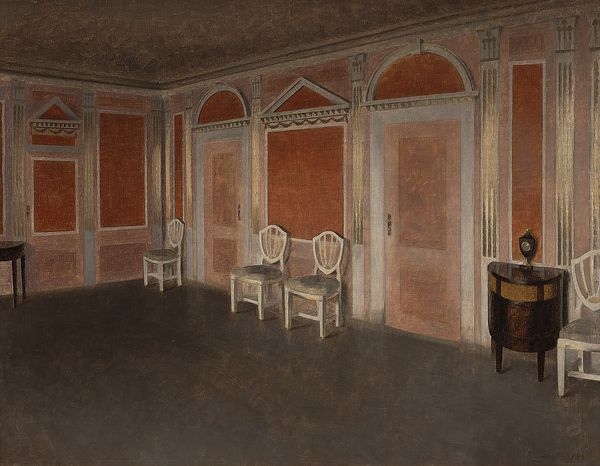
Vilhelm Hammershøi, The Red Room, ca 1897. Photo: Anders Sune Berg. Courtesy Ordrupgaard.
KM: This September through January, the museum will host the first solo exhibition of Flora Yukhnovich’s work outside the UK. What inspired the decision to bring her work to Denmark, and what do you hope visitors gain from this experience?
GO: For Ordrupgaard, it has been important to mark the 150th anniversary of the birth of Impressionism this year. We have celebrated this with a major exhibition focusing on women artists in French Impressionism, a presentation of Ai Weiwei’s Waterlilies #1, and now this exhibition with Flora Yukhnovich. We consider Yukhnovich one of contemporary art’s most extraordinary talents and strong voices. She shares an interest in the Rococo with the Impressionists, and in that sense, her works give rise to a renewed look at Impressionism, just as her works are strong aesthetic expressions in their own right. Not only are her works visually and aesthetically appealing and excellent, but she also manages to bring a number of both historical and contemporary references into play. With the Yukhnovich exhibition, we are very much looking forward to presenting this virtuosic, critically thinking, and compelling artist to a Danish audience.
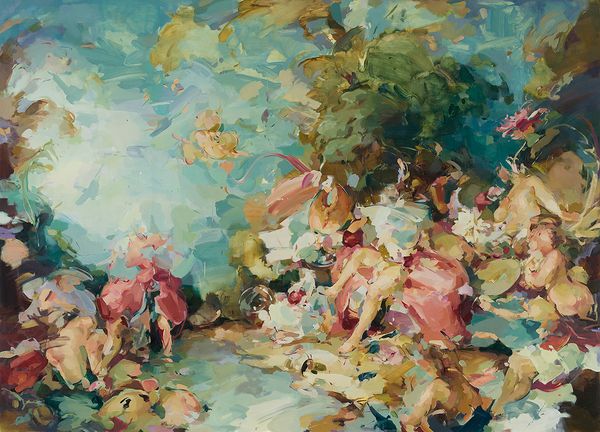
Flora Yukhnovich, If All the World Were Jell-O, 2019. © Flora Yukhnovich. Courtesy the artist, Hauser & Wirth, and Victoria Miro.
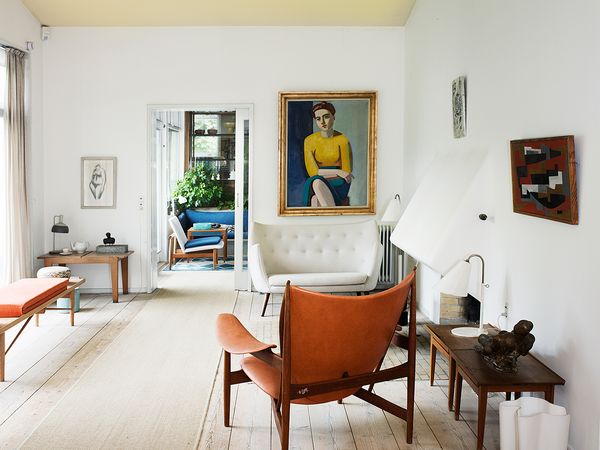
Finn Juhl's House, Ordrupgaard, Lounge. Photo: Henrik Sørensen. Courtesy Ordrupgaard.
KM: The Finn Juhl house is a rare treasure and a unique aspect of Ordrupgaard’s grounds. Can you share its history and how it enhances the overall visitor experience?
GO: Finn Juhl’s house is literally in the museum’s backyard and has been there since Juhl built it in 1942 as a home for himself and his family. The house became part of Ordrupgaard in 2008 when it was donated to the museum. Finn Juhl’s house is in itself a Gesamtkunstwerk, with architecture, furniture, art, and textiles in combination. In the house, you can experience Finn Juhl’s iconic and sculptural furniture in a powerful interaction with the modernist art that was an important source of inspiration for his furniture. The house is a home in the same way that the manor house at Ordrupgaard was a home for the founders Henny and Wilhelm Hansen, and it has similar intimate and aesthetic qualities.
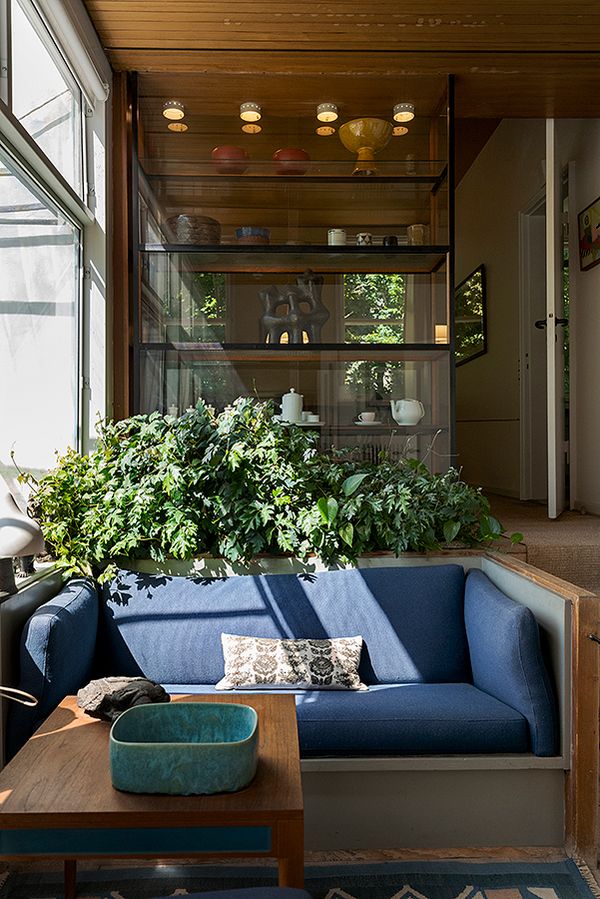
Finn Juhl's House, Ordrupgaard, Lounge. Photo: Paul Skovbakke. Courtesy Ordrupgaard.
KM: How does the museum foster a connection with the local community, and what educational and participatory programs do you offer?
GO: Ordrupgaard has a close connection to local neighborhoods — not least through the museum’s art park, which is free to enter and is visited and used by many locals. Children and institutions are particularly fond of Jeppe Hein’s recently inaugurated Water Pavilion Ordrupgaard, as well as Olafur Eliasson’s Weather the Weather and the Starn brothers’ Geometry of Innocence.
The museum offers several weekly introductions to its collections and special exhibitions, and we are increasingly emphasizing a versatile event program that expands and deepens the experiences provided by the museum.

Olafur Eliasson, Weather the Weather, 2016. Photo: Paul Skovbakke. Courtesy Ordrupgaard.
KM: Is there a particular space within the museum or on the grounds that you love to escape to when you need a break?
GO: The museum’s conservatory — here, the indoors and the outdoors merge in a specific and beautiful way.
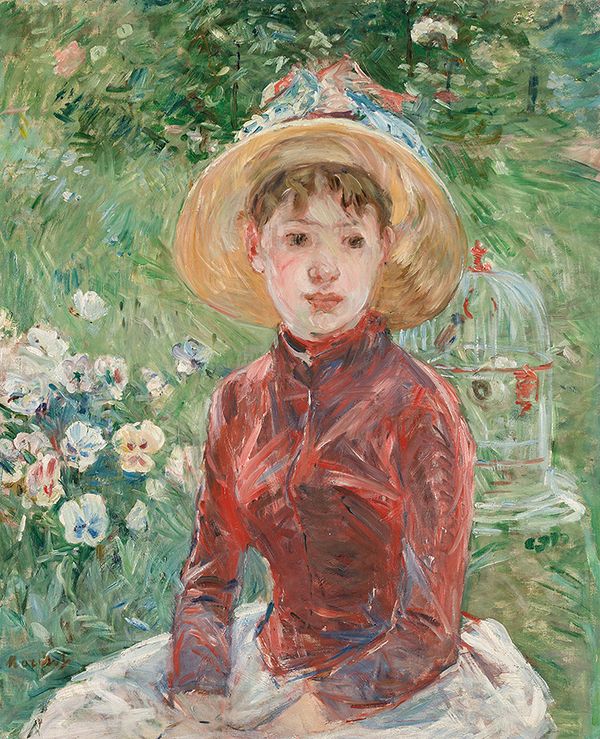
Berthe Morisot, Young Girl on the Grass (mademoiselle Isabelle Lambert), 1885. Photo: Anders Sune Berg. Courtesy Ordrupgaard.
KM: Lastly, what is one tip you would give to art lovers visiting Denmark?
GO: Visit some of the museums that began as private collections but are now public museums: Ordrupgaard, The Hirschsprung Collection, The David Collection, and Faaborg Museum, to name but a few. Here in Denmark, outstanding art, with an emphasis on Danish art, is in beautiful dialogue with exceptional architecture, furniture, and design.
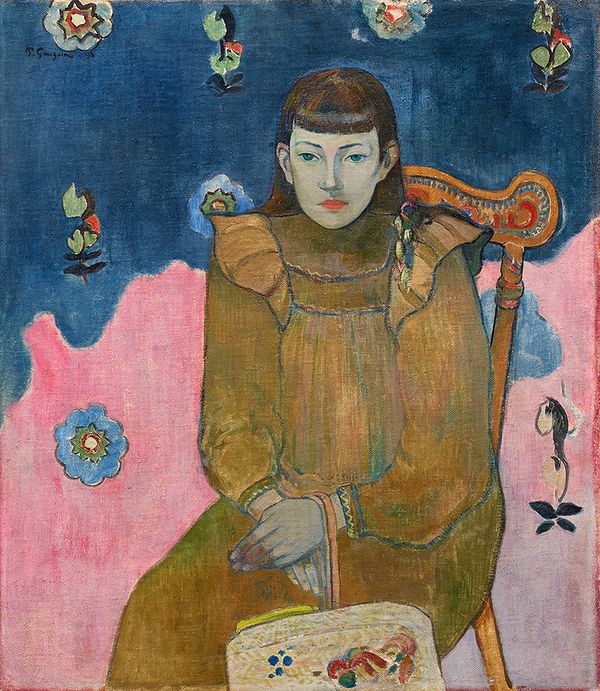
Paul Gauguin, Portrait of a Young Woman, Vaïte (Jeanne) Goupil, 1896. Photo: Anders Sune Berg. Courtesy Ordrupgaard.
Ordrupgaard presents the exhibition FLORA YUKHNOVICH. INTO THE WOODS from 18 September through 19 January 2025.
Follow Ordrupgaard on Instagram >
Discover More from Modern & Contemporary Art >
Recommended Reading
